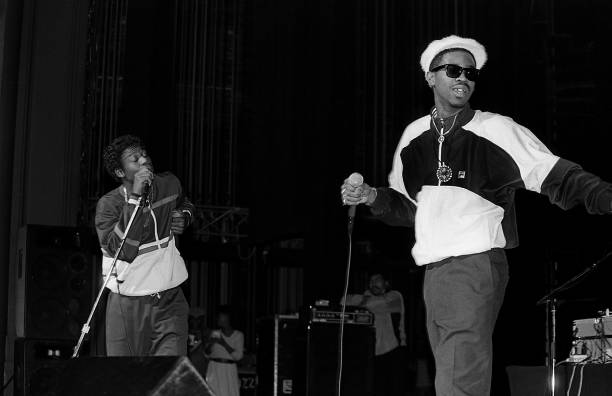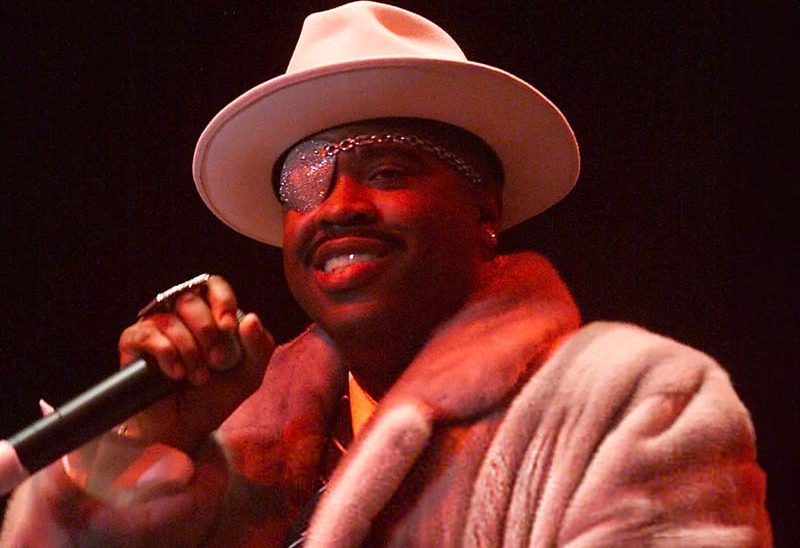Hip-hop in the 1980s was a wonderfully weird scene. No one quite epitomized that creative weirdness as totally as the eyepatch-wearing, “truck jewelry”-festooned, British-sounding kid from the Bronx known as Slick Rick (a.k.a. Rick the Ruler, MC Ricky D). “Children’s Story,” the second single from Slick Rick’s classic debut album The Great Adventures of Slick Rick, remains one of the high points of hip-hop’s golden age.
In an era where authenticity, realism and street cred were becoming the rule, Slick Rick was not afraid to fantasize. His songs sometimes took place in the ghetto, sometimes in a medieval throne room. “Slick Rick” might have seemed like an over-the-top artistic persona, but a lot of his affectations were based in reality. He rapped with an English accent because he was born in England, to Jamaican immigrant parents, and lived in South London for the first 10 years of his life. His eyepatch was not a prop to make him look like a pirate: he was blinded in his right eye by an early childhood accident. Still, there’s no denying the rapper born Richard Walters in 1965 was a self-mythologizing genius. His ability to deliver bleak, street-level tales wrapped in laugh-out-loud humor and imaginative narratives marked him out as one of rap’s great storytellers.

MC Ricky D first made his mark as a sideman to another hip-hop pioneer, Doug E. Fresh. Rick was a member of the Get Fresh Crew, and was heavily featured in Fresh’s biggest hits, “The Show” and its B-side “La-Di-Da-Di.” The latter was essentially a showcase for Rick, who wove a story of ludicrous romantic entanglement over an amazing display of unaccompanied beat boxing by Fresh. “La-Di-Da-Di” was a gift to future hip-hop artists, who still plunder it for samples and lyrical borrowings. Even if you’ve never heard Slick Rick, you’ll recognize him saying “Hit it!” on Rob Base and DJ EZ Rock’s “It Takes Two,” Naughty by Nature’s “O.P.P.” or Beastie Boys’ “Hold It Now, Hit It” — to say nothing of the Notorious B.I.G.’s “Hypnotize,” whose “Biggie, Biggie, Biggie” chorus is a direct lift from “La-Di-Da-Di.”

On the strength of those two hits, Slick Rick signed to the young hip-hop label Def Jam as a solo artist. The Great Adventures of Slick Rick, his 1989 Def Jam debut, marries his idiosyncratic flow to beats that used samples almost as adroitly as Rick used his voice. Many of the tracks were produced by Hank Shocklee and Eric Sadler of the Bomb Squad, already riding high for their work on Public Enemy’s It Takes a Nation of Millions to Hold Us Back. But the production on its most influential track is credited to Slick Rick himself.

Though “Children’s Story” was far from hip-hop’s first “story song,” it was told in a way that distinguished it from its predecessors. MCs like KRS-One, Rakim and LL Cool J narrated their inner-city cautionary tales in the first person, either taking on the persona of the ill-fated antagonist, or simply reporting actual experiences they had gone through. Slick Rick tells his tale of a good kid gone bad in the third person, having framed it as a bedtime story for his nephews. (Why he thinks this particular tale will help them get to sleep is anybody’s guess: after he bids them good night, one of them says to the other “Man, that Uncle Ricky is really weird…”) Ice Cube borrowed this framing device on “Once Upon a Time in the Projects,” from his solo debut Amerikkka’s Most Wanted, where he put the Mother Goose characters into a Compton-like ghetto fairyland to great comic effect. In Slick Rick’s case, the framing allows his party-pirate-captain persona to drop some fairly serious social commentary into the mix.

As good as Rick’s vocal delivery is, the crowning glory of “Children’s Story” is the beat, an insistently slinky groove built around a piano riff from Bob James 1974 hit “Nautilus.” The Great Adventures of Slick Rick is full of masterful production, but “Children’s Story” stands out for its sheer stickiness. The track is such an effective earworm that in 1995 producer Oji Pierce lifted it wholesale as the basis for Montell Jordan’s “This Is How We Do It,” which duly went on to become one of the defining pop hits of the Nineties.

Unfortunately, Slick Rick was never able to fully follow up on the success of “Children’s Story” and The Great Adventures. His career was hobbled when he was involved in a shooting and sentenced to 10 years in prison in 1990. Though he only ended up doing half that time, five years was enough to halt his momentum. He released a number of comeback albums, some of which he recorded while still in prison, but none of them achieved the creative lunacy of that first LP.
Yet Slick Rick’s influence endured. He’s still held in honor by hip-hop’s cognoscenti, and remains one of the most sampled artists in the genre’s history. He was the first rapper to have one of his songs directly covered by another, when Snoop Dogg remade “La-Di-Da-Di” for his solo debut Doggystyle in 1993. Even the Grammys — perhaps the most behind-the-curve institution in the entire entertainment industry — finally recognized Slick Rick’s stature, giving him a Lifetime Achievement Award in 2023. When asked by Wax Poetics in 2020 what he wanted his legacy to be, Rick was his usual mix of humble and proud: “As a storyteller on wax, as the icon of storytelling in hip-hop. I’d be happy with that.”







